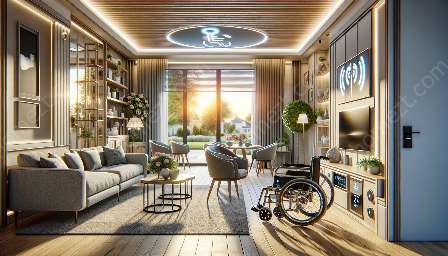Smart homes equipped with advanced technologies offer a range of safety features specifically designed to cater to the needs of the elderly population. These features not only provide convenience but also enhance the overall safety and well-being of the elderly residents.
Designing for Disabled or Elderly in Smart Homes
The concept of designing smart homes for the elderly overlaps with the broader field of designing for disabled or elderly individuals. The integration of intelligent technology in home design can significantly improve the quality of life for this demographic.
Intelligent Home Design
Creating intelligent home designs involves incorporating various technologies and features that adapt to the needs of the elderly or disabled occupants. These designs aim to enhance accessibility, safety, and overall comfort within the home environment.
Safety Features in Smart Homes
Adaptive Lighting
Smart homes can utilize adaptive lighting systems that adjust based on the time of day, occupancy, and ambient light conditions. For elderly individuals, proper lighting is crucial to prevent accidents and improve visibility.
Automated Fall Detection
Advanced sensors and intelligent algorithms can be integrated into the structure of a smart home to detect falls or sudden movements. This feature is especially important for elderly individuals who are at higher risk of falls and injuries.
Remote Monitoring and Emergency Notifications
Smart home systems can include remote monitoring capabilities, allowing family members or caregivers to receive alerts in case of emergencies or changes in routine. This feature provides peace of mind and enhances the overall safety support for the elderly residents.
Assistive Technology Integration
Smart homes can be equipped with assistive technologies, such as voice-activated controls, smart medication dispensers, and adjustable furniture, to accommodate the specific needs of elderly or disabled individuals.
Environmental Sensors for Health Monitoring
Integration of environmental sensors, such as air quality monitors and temperature controls, can contribute to the overall health monitoring of elderly residents. These sensors can detect potential hazards and ensure a comfortable living environment.
Smart Locks and Access Control
Smart locks and access control systems provide enhanced security and convenience for elderly individuals, allowing them to grant access to caregivers or family members remotely and monitor the entry and exit of their homes.
Integration with Medical Alert Systems
Smart home platforms can integrate with medical alert systems, enabling quick access to emergency services in the event of a health crisis. This seamless integration can potentially save lives and provide added security for the elderly residents.
Conclusion
Overall, the safety features in smart homes for the elderly are designed to foster independence, security, and peace of mind for this demographic. By integrating these features with considerations for designing for disabled or elderly individuals and intelligent home design, technology can significantly improve the quality of life for elderly residents, allowing them to age in place comfortably, safely, and with dignity.


